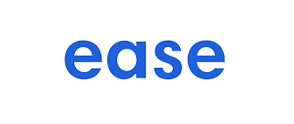Dreading open enrollment? You shouldn’t, it’s one your best opportunities to increase your financial security in today’s inflationary environment.
Nearly a third of all employees say they dread the annual benefits open enrollment period each year, and only 10% really feel good about the choices they make when selecting next year’s benefits. In writing this article, we hope to help employees understand and make wise decisions about their health coverage by paying more attention to, and being more involved in, the open enrollment process.
What is annual open enrollment?
Annual open enrollment is a certain time designated each year that employees can review, renew, select, and/or add coverage and make changes to their employer-sponsored health benefits for the next year.
What type of benefits are included in the benefit package?
Every employer is different, but typical benefits include:
- Health insurance (can be paired with an HSA that will help you save money on healthcare – learn more here.
- Dental insurance
- Vision insurance
- Life Insurance
- Disability Insurance
- Retirement Plans
Many employers provide various other benefits that are intended to support an employees’ lifestyle and make life easier for them.
These benefits or perks go above and beyond traditional health coverage and show your employer is truly invested in your overall wellbeing. They may be fully paid for by the employer, or offered on a voluntary basis which can be paid fully by the employee or on a shared cost arrangement with the employer.
These can include:
- Flexible spending accounts (FSAs) – many employees say inflation and the rising cost of health insurance and healthcare services are a big concern for 2024. Participating in a Flexible Spending Account program will help employees save money on taxes and healthcare in 2024 – learn more here.
- Wellness programs
- Mental health
- Telehealth
- Pet insurance
- Legal assistance
- Childcare
- Advocacy services
- Long Term Care
- And more lifestyle benefits
Preparing for open enrollment – tips for making good choices and a smooth enrollment period.
Determine what kind of coverage you need and how much coverage you need. What benefits are most important to you and your family?
- Do you have a growing family and expect to use a lot of healthcare and wellness services?
- Do you or a dependent have any health conditions that requires more extensive care and medications?
- Do you or any dependents need extensive dental work, braces or eyecare in the upcoming year?
Does your spouse have coverage?
Having both spouses on one option with dependents is the most common choice for couples, even if both can get coverage from their employers. Determine whose employer benefits will be the best option.
Understand what benefits are mandatory by your employer.
Per the affordable care act, if your employer has more than 50 full-time employees, they must provide 60% coverage of the minimum essential benefits, as established by the ACA – Learn more here.
Do you have your enrollment materials?
- Enrollment schedule
- Plan summary or summaries
- Plan deadline
- Any materials highlighting changes in benefits or rates, increases, etc. DO NOT assume your plan is the same as last year.
- Does your employer have any enrollment or decision tools to help you estimate your costs?
- What benefits are you eligible for? Are there any other options if you are not eligible for coverage?
Other important things to consider during your company’s annual open enrollment period.
Understand your terminology when comparing plans and premiums.
Copayments – the fixed dollar amount you must pay for a doctor visit or other covered service. Accordingly, for those individuals who visit the doctor frequently, a plan with a low co-pay may be a good choice.
Deductibles – a deductible is the amount you must pay annually before certain healthcare services will be covered. Accordingly, a high deductible, low premium plan is often a good choice for those individuals who are generally healthy.
Coinsurance – after your deductible is met, you will still pay for a portion of your medical services, referred to as coinsurance. For example, many policies pay between 60% to 80% of your healthcare costs, while you cover the remaining 20% to 40%.
You have an annual out-of-pocket maximum that includes copayments, deductibles and coinsurance. Once you reach your out-of-pocket maximum, the insurance company pays 100% of your healthcare costs.
Consider the plan’s healthcare provider network. Whether an HMO or PPO, all health plans have an approved provider network. If you use healthcare service providers outside of the network, there is a good chance those charges won’t be covered by your policy.
You can’t change your benefits after open enrollment ends unless you qualify for a life event.
Certain events or “life status changes” trigger something called a “special enrollment period.” An employee qualifies for a special enrollment period when a life event may require they make a different benefits election or they add or lose a family member on their coverage. Some examples of life status change events include:
- Birth or adoption of a child
- Marriage or new domestic partnership
- Divorce
- Death of someone covered under the plan
- Loss of other group coverage




